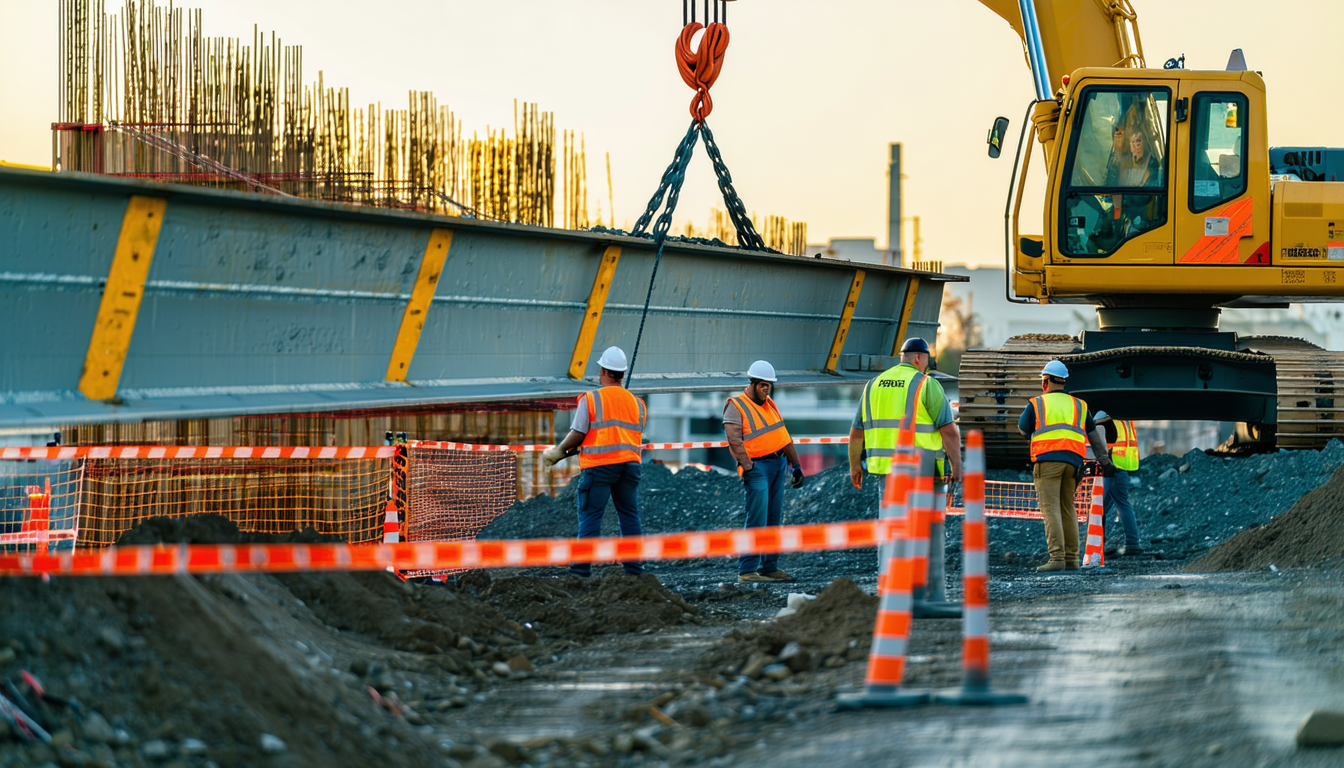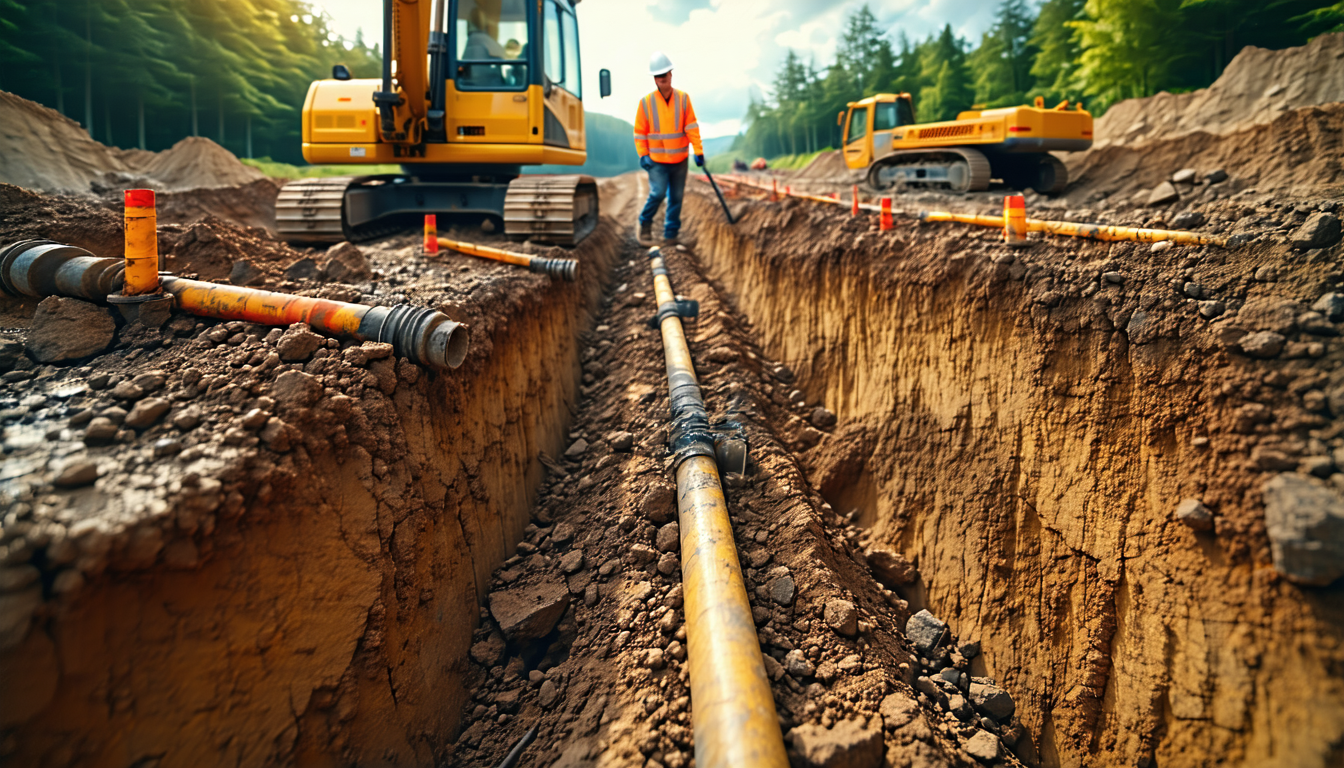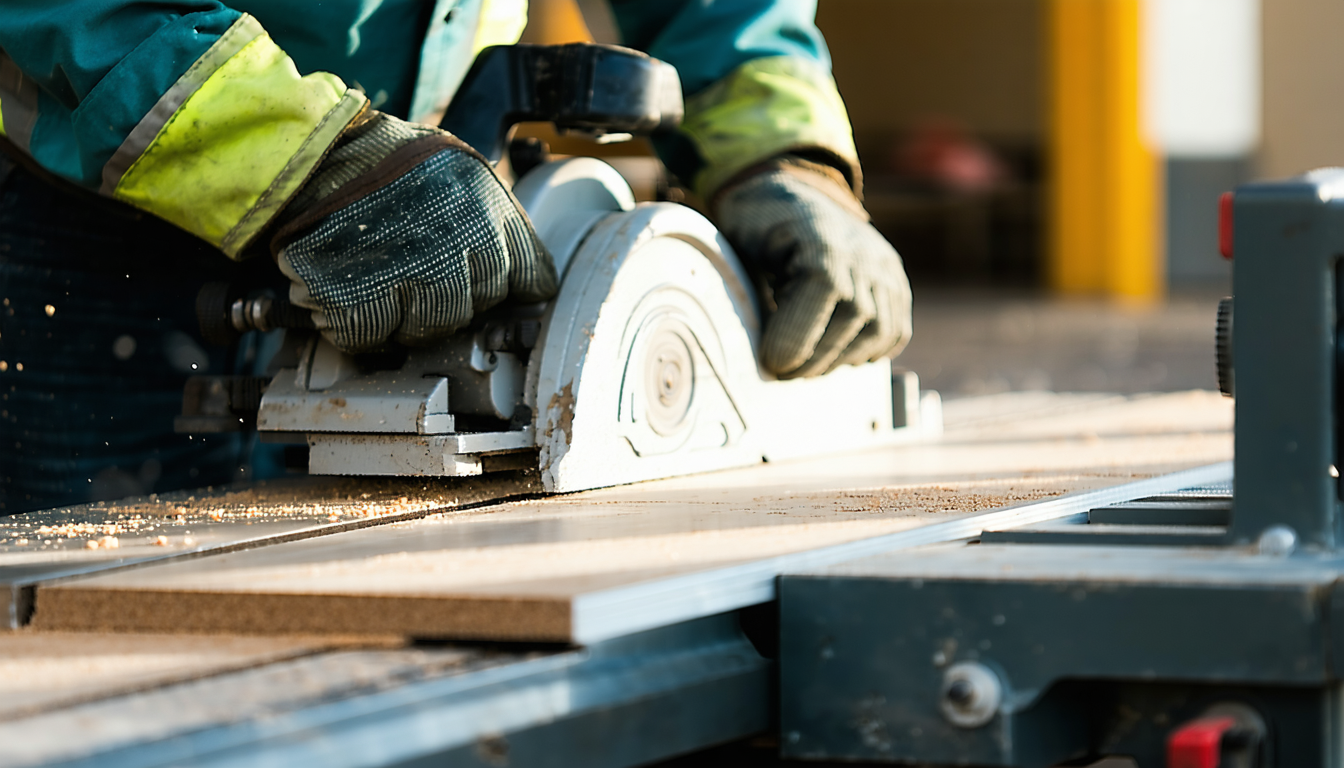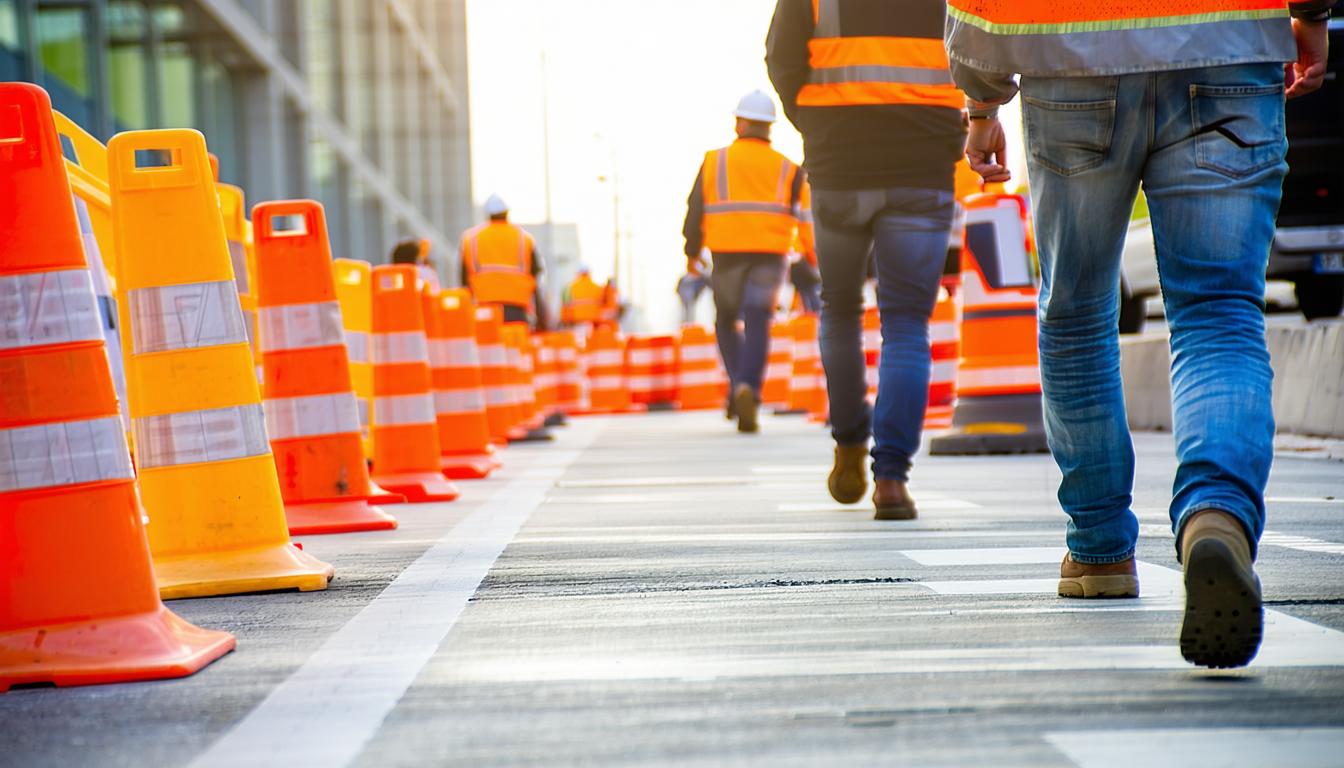In commercial and institutional building construction, one misstep can mean tragedy. Day after day, common, addressable injuries like struck-by events, electrocutions, and caught-in accidents endanger personnel’s lives and cost companies millions (Source: U.S. Bureau of Labor Statistics). But the real gut punch? Many of these events could have been lessened.
The top four injury types in commercial and institutional building construction represent ongoing risks that project leaders, safety professionals, and jobsite crews face. Behind each number is a real person and an avoidable event. The good news is, a comprehensive safety approach, backed by technology like video AI, is creating better outcomes for leading construction teams.
In this guide, we’ll break down the top 4 injuries that happen on commercial and institutional construction projects. For each, we’ll show exactly how you can reduce their likelihood—combining proven safety protocols with the power of video intelligence.
The Cost of Safety Negligence in Commercial and Institutional Building Construction
Ignoring safety is both risky and expensive. OSHA penalties for serious incidents in commercial and institutional building construction can soar into the tens of thousands, with the average penalty at $15,162, a maximum of $78,000, and a median of $5,839 in recent years.
Anticipatory safety is always cheaper than paying these penalties. With the right systems, including video intelligence, many of these incidents can be avoided.
The Top 4 Common, Addressable Injuries in Commercial and Institutional Building Construction
Let’s get specific. These are the four common, addressable injuries where video analytics make a measurable difference—directly supporting OSHA protocols and proven best practices.
1. Struck-by Object or Equipment

Scenario:
A crew member crosses a busy walkway as a crane lowers a steel beam. The load swings unexpectedly, and the team member is struck by the beam.
Root Causes & Impact:
Struck-by events are the second most common injury—238 incidents (17.3%)—often caused by shifting tools, swinging loads, or moving vehicles (Source: OSHA Injury Summary). Poor exclusion zones, unsecured materials, and lack of spotters are frequent contributors. These occurrences can result in fractures, blunt force trauma, and even death.
How video intelligence helps:
Video systems can monitor exclusion zones, detect when personnel enter danger areas, and trigger real-time alerts. Reviewing footage helps identify process gaps—like missing signage or traffic control.
2. Caught-in/Between (Including Trench/Excavation Hazards)

Scenario:
A crew member is installing drainage pipe when the trench wall collapses, trapping and suffocating him under several tons of soil.
Root Causes & Impact:
Caught-in/between accidents account for 8.7% of injuries, with trench collapses responsible for a high share of fatalities (Source: OSHA Injury Summary). Missing trench boxes, improper soil analysis, and working in unprotected excavations are leading causes. These events are severe and can be fatal within minutes.
How video intelligence helps:
Video AI can monitor excavation zones and alert on-site managers if personnel enter unprotected trenches. This monitoring speeds up emergency response and supports safety compliance.
3. Amputations and Machine-Related Injuries

Scenario:
A crew member feeds material into a table saw with a missing guard. The blade catches a glove, pulling his hand in and amputating two fingers.
Root Causes & Impact:
Amputations make up 15.6% of all occurrences—the majority to fingers and hands—usually during use of saws or when handling heavy, shifting materials (Source: OSHA Injury Summary). Missing machine guards, improper lockout/tagout, and complacency about PPE are repeat offenders.
How video intelligence helps:
By setting no-go zones around dangerous equipment, video AI can flag when team members get too close. Reviewing video footage after events supports targeted retraining and root cause analysis.
4. Pedestrian-Vehicle Collisions

Scenario:
During a busy material delivery, a forklift operator backs up, unaware of a laborer behind him. The forklift strikes the team member, causing serious injury.
Root Causes & Impact:
Pedestrian-vehicle collisions account for 2.8% of occurrences but often result in severe injury or death (Source: OSHA Injury Summary). Contributing factors include poor traffic management, lack of barriers, and distracted operators.
How video intelligence helps:
Video AI can track vehicle and pedestrian movement, flag unsafe proximity, and alert operators or spotters. Over time, analytics reveal high-risk patterns—fueling smarter traffic planning.
Obstacles and Impact of Injuries
How Technology Strengthens Injury Mitigation
Video intelligence empowers people to act before things go wrong. Here’s how it directly supports the top four injury types in commercial and institutional building construction.
Struck-by Object/Equipment
Safety pain point:
Busy sites mean overlapping tasks and moving loads. It’s hard to maintain perfect exclusion zones.
Tech Solution: Video AI detects when workers step into danger areas or are in the path of moving loads. Video analytics can even track how often unsafe events occur, helping teams redesign workflows and reinforce signage or spotter use.
Caught-in/Between (Trench/Excavation)
Safety roadblock:
Trench boxes don’t always get installed, and supervisors can’t constantly monitor every excavation.
Tech Solution: Video AI can be configured to alert teams if anyone enters an unprotected trench. Video records support investigations and OSHA compliance.
Amputations and Machine-Related Injuries
Safety sticking point:
Workers bypass machine guards or use unsafe techniques—often to “speed things up.”
Tech Solution: Video AI can be configured to recognize when people enter hazardous areas around machinery. Alerts flag protocol deviations as they happen. After an event, teams can review footage to pinpoint causes and coach safer behavior.
Pedestrian-Vehicle Collisions
Safety obstacle:
Forklifts and trucks share space with people. Blind spots and distractions make collisions likely.
Tech Solution: Cameras track vehicle and pedestrian traffic, flagging unsafe proximity. If a team member steps into a forklift’s path, the system can alert the team lead. Over time, analytics from alert data can identify high-risk areas, informing better layout or signage.
Practical Implementation of Safety Technology
Getting the most out of video AI requires smart integration with your existing safety culture.
When evaluating solutions, look for:
The best tech is the one your team actually uses—and trusts.
Ready to build a safer jobsite with video AI?
See how Spot AI helps construction teams reduce risk and improve safety outcomes. Request a demo to experience our video AI platform in action, or learn more about video intelligence for construction.
Frequently asked questions
What are the most common, addressable injuries in commercial and institutional building construction?
The most common, addressable injuries are astruck-by object or equipment events, caught-in/between accidents, amputations and machine-related injuries, and pedestrian-vehicle collisions (Source: OSHA Injury Summary).
Can AI video systems replace traditional safety protocols?
No, technology is a support tool for your existing safety culture, training, and established procedures, not a replacement. The best results come from integrating video intelligence with your existing safety programs.
What’s the best way to implement safety technology on a jobsite?
Start by identifying your biggest risks, then select a solution that fits your workflows and camera infrastructure. Involve your safety team and tradespeople in rollout, and use video data to drive positive coaching and process improvements.
Are there compliance issues with using video AI in construction?
You must comply with OSHA standards and privacy laws. Choose a provider with strong data security, clear protocols for footage access, and transparent data retention policies. Always inform your teams about video monitoring and use footage for insight-driven safety coaching, not disciplinary actions.
How can technology help with incident investigations?
Video intelligence makes it easy to find and review relevant footage, pinpoint root causes, and verify compliance with safety protocols. This speeds up investigations and supports regulatory reporting.
How does Spot AI work with existing camera systems?
Spot AI is designed to integrate with most existing camera setups, making it easy to add video AI analytics and search features without a full hardware overhaul.
What is the best video analytics for workplace safety?
The best systems combine several key features: real-time, specific alerts that enable rapid intervention; intelligent search to find critical footage in seconds; and the ability to analyze data across sites to identify systemic risks. They should also integrate with your existing camera hardware to minimize cost and disruption, all while maintaining strong security protocols to protect sensitive data.
About the author
Joshua Foster is an IT Systems Engineer at Spot AI, where he focuses on designing and securing scalable enterprise networks, managing cloud-integrated infrastructure, and automating system workflows to enhance operational efficiency. He is passionate about cross-functional collaboration and takes pride in delivering robust technical solutions that empower both the Spot AI team and its customers.

























.png)
.png)
.png)